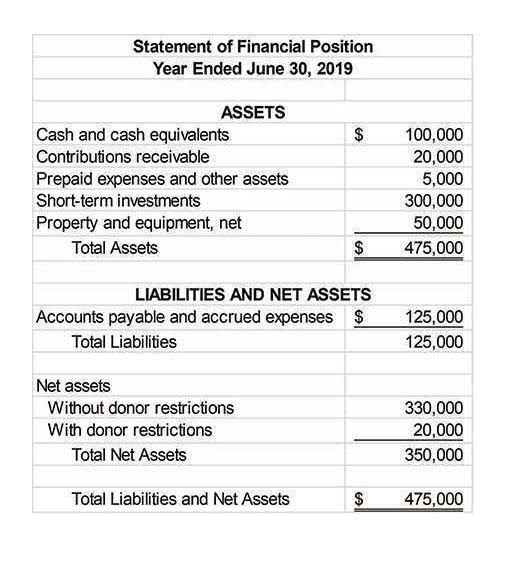
Plant assets are a part of non-current assets and are usually the largest group of assets one can find in the financial statements. Most companies, especially those that run fully in-house and do not rely on other parties for production or processing, require land. Even if a company does not operate on-site or own property, many businesses profit from purchasing land, even if they do not intend to use it until later. Equipment is also quite valuable and crucial to the operation of any organization.
What Are Plant Assets In Accounting
The cost of the machine is USD100,000, and it is expected to stay useful for five years with a residual value of USD10,000. Some fixed assets’ fair values can be extremely variable, needing revaluations as often as once a year. Revaluations every three to five years are permissible in most other circumstances, according to IFRS. Each of these types is classified as a depreciable asset since its value to the company and capacity to generate income diminishes during the asset’s useful life. Making continual improvements and continuously reviewing the quality of assets is an important part of keeping a company healthy. Improvements should be done on a regular basis or when a scenario necessitates intervention to extend the life of assets and avoid future issues with their capacity to serve a business.
Recording of Plant Assets In Financial Statements
The matching principle states that expenses should be recorded in the same financial year when the revenue was generated against them. As the fixed assets last longer, the expenses are divided over the item until they’re useful. It is important for businesses to properly identify and classify their plant assets to ensure accurate financial reporting and effective management of these assets. By categorizing and tracking these assets, companies can evaluate their investment decisions, assess their maintenance needs, and plan for future upgrades or replacements. Plant assets, also known as fixed assets, are tangible assets that are used in the production process or to generate revenue for a company over an extended period of time.

What Is Included in the Plant Assets?
18,000 USD must be charged to the plant asset account for every financial year as a depreciation expense. Any land maintenance, improvement, renovations, or construction to increase building operations or revenue generation capacity are also recorded as part of the plant assets. The assets can be further categorized as tangible, intangible, current, and non-current assets. It includes cash/bank, short-term securities, inventories, account receivables, etc. Compared to Exxon’s total assets of over $354 billion for the period, PP&E made up the vast majority of total assets. Some of the company’s fixed assets include oil rigs and drilling equipment.
- If you picture a business as a process that creates wealth for the owners, PP&E are the physical machine.
- In the balance sheet of the business entity, these assets are recorded under the head of non-current assets as Plant, property, and equipment.
- Plant assets must also be reviewed for impairment at regular intervals.
- By categorizing and tracking these assets, companies can evaluate their investment decisions, assess their maintenance needs, and plan for future upgrades or replacements.
- Purchases often signal that management expects long-term profitability of its company.
When a plant asset is purchased for cash, its acquisition cost is simply the agreed on cash price. This cost is objective, verifiable, and the best measure of an asset’s fair market value at the time of purchase. Fair market value is the price received for an item sold in the normal course of business (not at a forced liquidation sale).
- Plant assets are an integral part of a company’s long-term operations, and their management and accounting play a crucial role in the overall financial health and performance of a business.
- If debt has been used to purchase the plant asset, then the cash flow statement would also show the regular payments towards that debt too.
- Overall, plant assets are vital resources for a company’s long-term operations.
- Depreciation allocates the cost of a tangible asset over its useful life and accounts for declines in value.
Therefore, the company would record the machine at £110,000 as the initial cost. For example, a company purchases a new manufacturing machine for £100,000. In the end, be careful to distinguish between asset types both on the balance sheet and in practice. Founded in 1993, The Motley Fool is a financial services company dedicated to making the world smarter, plant assets are: happier, and richer. The Motley Fool reaches millions of people every month through our premium investing solutions, free guidance and market analysis on Fool.com, top-rated podcasts, and non-profit The Motley Fool Foundation. This is crucial to consider when buying land for a business since it might mean the difference between a long-term profit or loss.
AccountingTools

Even the smallest business has assets, which can include everything from cash in the bank, to the computer you’re working on, to the building where you manufacture piggy banks. A plant asset should be recognized at its costs when it fully meets the definition above by IAS 16. Some entities may also have internal policies that allow them to directly charge out the capital expenditure of a small value, usually below a certain threshold. Plant assets are a specific type of asset on a company’s balance sheet.
Naturally, the initial purchase of the plant asset would be an outflow of cash, any subsequent sales would be a cash inflow. Plant assets should be depreciated over their useful life, and reflected as an expense on the income statement. If there is an indication that the carrying amount (ie the historical cost) of a plant asset might have changed, an impairment test would be carried out.
The company would now adjust the carrying amount to £90,000, and depreciation would be calculated using the revalued amount. The total cost, including shipping and installation, comes to £110,000. We’re firm believers in the Golden Rule, which is why editorial opinions are ours alone and have not been previously reviewed, approved, or endorsed by included advertisers. The Ascent, a Motley Fool service, does not cover all offers on the market. The only exception is land, which does not have a limited useful life, so cannot be depreciated. Here’s an overview of General Electric’s business and whether the stock would benefit investment portfolios.
Plant assets are vital components of a company’s long-term operations, representing tangible assets used in the production process or revenue generation. Understanding the management and accounting of these assets is essential for maintaining financial stability, evaluating investments, and making informed decisions. By effectively acquiring, recording, depreciating, and disposing of plant assets, businesses can maximize their operational efficiency, profitability, and competitive advantage. Plant assets, also known as fixed assets, are tangible assets that are used in the production process or to generate revenue for a company over a prolonged period of time.
No responses yet